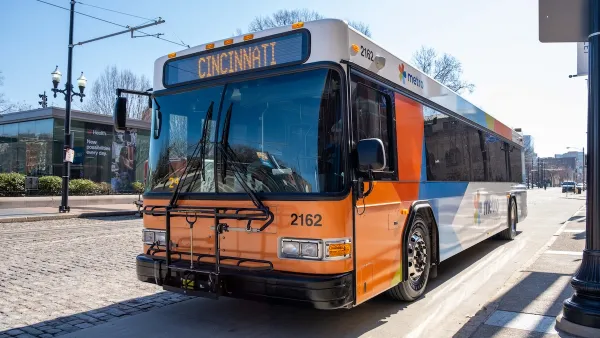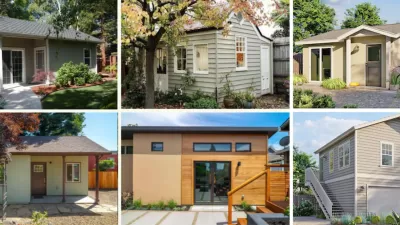Three years in the making, approval nears for Plan Cincinnati - the city's first comprehensive plan to be completed in the last 32 years. Randy A. Simes shares the details of the plan, which focuses growth around 40 walkable neighborhood centers.
Cincinnati holds a distinguished place in the history of the planning profession, as the first major American city to officially endorse a comprehensive plan (1925). With the completion of Plan Cincinnati, which will be presented to the city's the Planning Commission today, the city's planning department hopes to capitalize on the comeback led by Mayor Mark Mallory to refocus Cincinnati on a comprehensive vision for the city, after a contentious period of squabbling between developers and officials.
According to Simes, "The renewed focus on urbanism in the Plan Cincinnati
document establishes 11 goals that range from growing the city's
population, to becoming more aggressive with economic development, to
developing a culture of health. One of the key goals set out by Plan
Cincinnati calls on leadership to build on the city's existing assets.
To that end, the plan identified 40 Neighborhood Centers that should
serve as the diverse, walkable centers of activity throughout the city."
"City planners acknowledge, however, that building upon existing assets
will not be enough in order to create the envisioned outcomes identified
within PLAN Cincinnati. As a result, the document identifies 14
preliminary opportunities (see second map) for future mixed-use
development that can eventually serve as new neighborhood centers where
they are currently lacking."
FULL STORY: Plan Cincinnati aims to guide city back towards its urban roots

Planetizen Federal Action Tracker
A weekly monitor of how Trump’s orders and actions are impacting planners and planning in America.

Maui's Vacation Rental Debate Turns Ugly
Verbal attacks, misinformation campaigns and fistfights plague a high-stakes debate to convert thousands of vacation rentals into long-term housing.

San Francisco Suspends Traffic Calming Amidst Record Deaths
Citing “a challenging fiscal landscape,” the city will cease the program on the heels of 42 traffic deaths, including 24 pedestrians.

Amtrak Rolls Out New Orleans to Alabama “Mardi Gras” Train
The new service will operate morning and evening departures between Mobile and New Orleans.

The Subversive Car-Free Guide to Trump's Great American Road Trip
Car-free ways to access Chicagoland’s best tourist attractions.

San Antonio and Austin are Fusing Into one Massive Megaregion
The region spanning the two central Texas cities is growing fast, posing challenges for local infrastructure and water supplies.
Urban Design for Planners 1: Software Tools
This six-course series explores essential urban design concepts using open source software and equips planners with the tools they need to participate fully in the urban design process.
Planning for Universal Design
Learn the tools for implementing Universal Design in planning regulations.
Heyer Gruel & Associates PA
JM Goldson LLC
Custer County Colorado
City of Camden Redevelopment Agency
City of Astoria
Transportation Research & Education Center (TREC) at Portland State University
Jefferson Parish Government
Camden Redevelopment Agency
City of Claremont





























